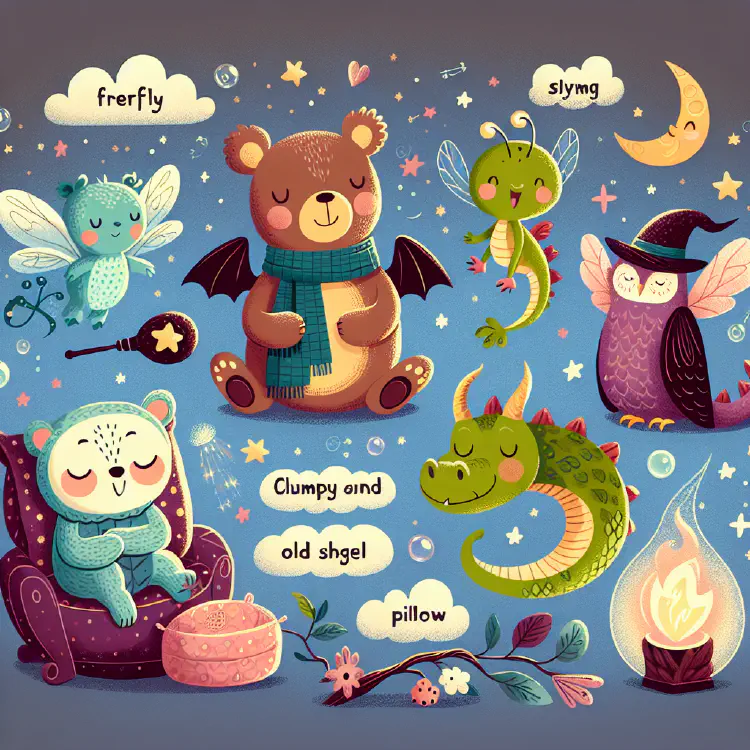How to Create Sleep Story Characters Your Child Will Love
Bedtime stories create lovable characters by tailoring to child's interests, giving unique traits, developing backstories, using descriptive language, and creating distinct voices.
- 4 min read

As parents, we all know the importance of a good night’s sleep for our little ones. One of the most effective ways to help children wind down and prepare for sleep is through bedtime stories. These magical tales not only entertain but also create a soothing atmosphere that encourages relaxation and sweet dreams. However, crafting engaging sleep stories with lovable characters can sometimes be a challenge. In this blog post, we’ll explore how to create sleep story characters that your child will adore, making bedtime a cherished and eagerly anticipated part of their day.
The Power of Bedtime Stories
Before we dive into character creation, let’s take a moment to appreciate the significance of bedtime stories in a child’s life. Bedtime stories for preschoolers and toddlers serve multiple purposes:
- They help establish a consistent bedtime routine.
- They promote language development and literacy skills.
- They foster imagination and creativity.
- They strengthen the parent-child bond.
- They provide a calming transition from daytime activities to sleep.
With these benefits in mind, it’s clear why creating captivating sleep stories and characters is so important. Now, let’s explore the steps to crafting unforgettable characters that will make your child look forward to their nightly bedtime short stories.
Step 1: Know Your Audience
The first step in creating lovable sleep story characters is to understand your audience – your child. Consider their age, interests, and personality. Are you crafting bedtime stories for toddlers or preschoolers? What kind of characters do they typically gravitate towards in their favorite books or shows? By tailoring your characters to your child’s preferences, you’ll increase the likelihood of them becoming instant favorites.
For younger children, simple and relatable characters work best. Think of animals, toys, or even personified objects like a friendly star or a cozy blanket. For older preschoolers, you can introduce slightly more complex characters with distinct personalities and backstories.
Step 2: Give Your Characters Unique Traits
To make your sleep story characters memorable and lovable, give them unique traits that set them apart. These traits can be physical attributes, personality quirks, or special abilities. Here are some ideas to get you started:
- A teddy bear with extra-long arms for giving the best hugs
- A shy firefly who glows brighter when she’s happy
- A clumsy but kind-hearted dragon who accidentally breathes bubbles instead of fire
- A wise old owl who speaks in rhymes
- A magical pillow that can transport children to their favorite dream destinations
Remember, the key is to make these traits both interesting and relatable. Your child should be able to connect with the character on some level, whether through shared experiences or aspirations.
Step 3: Develop a Backstory
Even in short five-minute bedtime stories, having a simple backstory for your characters can make them more engaging and believable. This doesn’t need to be elaborate – a few key details can suffice. For example:
- Where does the character live?
- Do they have any friends or family?
- What’s their favorite thing to do?
- Do they have any fears or challenges they’re working to overcome?
These details can be gradually revealed over multiple bedtime stories, giving your child something to look forward to each night as they learn more about their new favorite character.
Step 4: Use Descriptive Language
When introducing your sleep story characters, use vivid and sensory language to bring them to life. This will help your child visualize the character and form a stronger connection. For example, instead of simply saying “a big bear,” you could describe “a cuddly bear with fur as soft as cotton candy and eyes that twinkled like stars.”
Engaging multiple senses in your descriptions can make the character feel more real and present. Consider how the character might sound, smell, or feel to touch. This sensory approach can be particularly effective in bedtime stories for toddlers, who are still developing their understanding of the world through their senses.
Step 5: Give Your Characters a Voice
One of the most enjoyable aspects of telling bedtime stories is the opportunity to use different voices for your characters. This not only makes the story more entertaining but also helps distinguish between characters and brings them to life.
When creating voices for your sleep story characters, consider:
- Pitch: High or low?
- Speed: Fast or slow?
- Accent: Any particular
